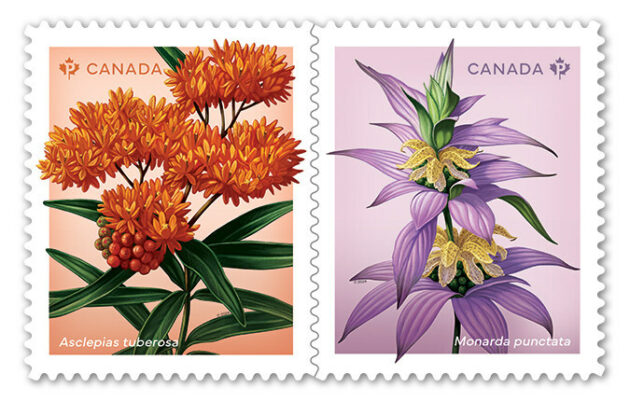
News
Flowers
Canada Post’s latest stamp issue showcases environmentally important wildflowers
Spotted beebalm and butterfly milkweed provide food and shelter for pollinators, as well as blooms for gardens and bouquets.
March 8, 2024 By Greenhouse Canada

Image Credit: CNW Group/Canada Post
Canada Post’s latest stamp issue features two native wildflowers that are important sources of food for a variety of pollinators, including hummingbirds, butterflies and bees.
The butterfly milkweed (Asclepias tuberosa) and spotted beebalm (Monarda punctata) become heavy with nectar and pollen, attracting hungry insects and birds. Those pollinators play a crucial role in fertilizing plants, including fruit trees and other agricultural crops.
Both plants are perennial herbs that can grow up to a metre tall. The glossy leaves of butterfly milkweed, and the leaves of other milkweeds, are the sole source of food for monarch butterfly caterpillars.
A fragrant member of the mint family, spotted beebalm is known for its unique and intricate whorls of purple-spotted, tubular flowers that alternate with rings of white-to-purple leaf bracts along its upper stem.
In Canada, spotted beebalm and butterfly milkweed are native only to certain regions of southern Ontario and southwestern Quebec. In Quebec, these wildflowers are designated as threatened and protected by law.
Designed by Andrew Perro, the two stamps feature original illustrations by Alain Massicotte of wildflowers in bloom. The stamps are available in booklets of 10, coils of 50, collectible coil strips of 4 and 10 stamps, as well as in a souvenir sheet of 2 stamps.
Stamps and collectibles are available at canadapost.ca and postal outlets across Canada.
Print this page